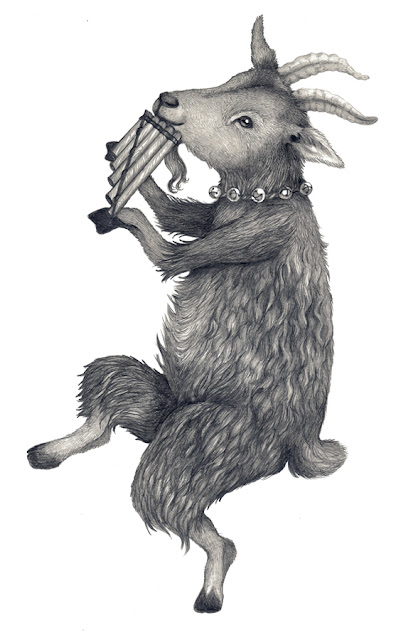The fourth installment in the "Beasts in Books" series had to be the
Centaur. I conceived of him, fully-grown, in my mind, in appropriate
mythological fashion. He rested and matured in my mind while I worked
on another commission.
Having just finished Madeline
Miller's "The Song of Achilles," I was inspired to draw the centaur. She
writes the centaur Chiron so elegantly. In Greek culture, centaurs
have generally suffered from a bad reputation, known chiefly for their
lusty and destructive tendencies, due to the fact that they are half-man
half-horse. In art, you may find them most famously on the Parthenon
reliefs, where they battle the tribe of Lapiths. However, a few
centaurs stand out as more man than beast: Pholus and Chiron.
I took as my inspiration the most famous of the centaurs: Chiron. Son of the titan Cronus and a cloud goddess, Chiron
was tutored by Artemis (virgin goddess of the hunt) and her brother
Apollo (god of the sun, the hunt, poetry, and medicine), learning at
their hands to hunt, to play, and to heal. He tutored most of the
heroes of ancient mythology, including Achilles, Hercules, Jason, and
Actaeon on the heights of Mt. Pelion.
I took as another
point of inspiration Ovid's Fasti, Book V, May 3, which tells of
Chiron's accidental death from the hydra-poisoned spear of Hercules, in
the company of both Hercules and the young Achilles:
"In less than four nights, Chiron, the semi-human
Joined to the body of a tawny horse, reveals his stars.
Pelion is a mountain facing south in Haemonian Thessaly:
The summit’s green with pines, the rest is oak.
Chiron, Philyra’s son, lived there. An ancient rocky cave
Remains, inhabited once, they say, by that honest old one.
He’s thought to have exercised those hands, that one day
Sent Hector to his death, in playing on the lyre.
Hercules visited him, most of his labours done,
Only the last few tasks remaining for the hero.
You could have viewed Troy’s twin fates, together:
One the young scion of Aeacus, the other Jove’s son.
Chiron received young Hercules hospitably,
And asked him the reason for his being there.
He replied, as Chiron viewed his club and lion-skin, saying:
‘The man is worthy of these weapons, the weapons of the
man!’
Nor could Achilles, daringly, restrain his hands,
From touching that pelt shaggy with bristles.
While the old one handled the arrows, encrusted with poison,
A shaft fell from the quiver and lodged in his left foot.
Chiron groaned, and drew its blade from his body:
Hercules, and the Thessalian youth groaned too.
Though the Centaur himself mixed herbs culled
From Pagasean hills, treating the wound with ointments,
The gnawing venom defied his remedies, and its evil
Penetrated his body, to the marrow of his bones.
The blood of the Lernean Hydra fused with
The Centaur’s blood, giving no chance for aid.
Achilles, drenched in tears, stood before him as before
A father, just as he would have wept for Peleus dying.
Often he caressed the feeble fingers with loving hands,
(The teacher had his reward for the character he’d formed),
And he kissed him, often, and often, as he lay there, cried:
‘Live, I beg you: don’t leave me, dear father!’
The ninth day came, and you, virtuous Chiron,
Wrapped your body in those fourteen stars."
On May 5 and 6, Ovid discusses the constellations Centaurus and Scorpio; one appears to be shooting the other.
In the drawing, I've added the Ovid in its original Latin. The border
contains a pattern commonly found on Greek pottery, and in the corners,
in Greek red figure pottery style, are the centaur shooting at the
scorpion, to match their constellations in the spring night sky. Below
are two of Chiron's students: Hercules, with club and lion skin, and
Achilles, armored as we would see him in the Trojan War. Chiron
himself, in the body of the artwork, is how I imagined him, with long
horse ears and a mane in place of hair. His eyes are dark like a
horse's. He wields a bow but it is not notched with an arrow; I imagine
him at the hunt on the heights of Pelion.
 |
"The Centaur" 2012 Jessica Boehman
|























































